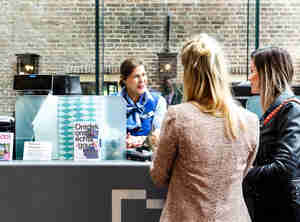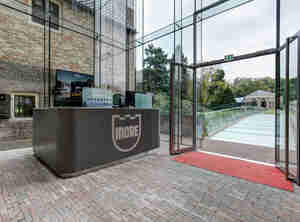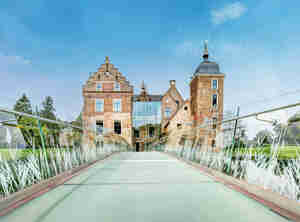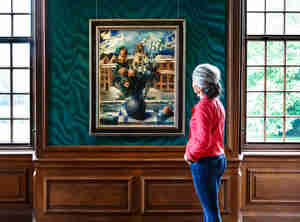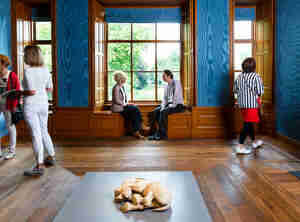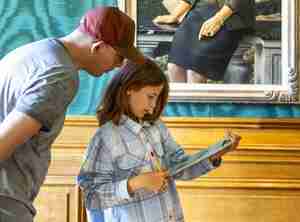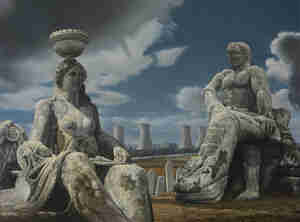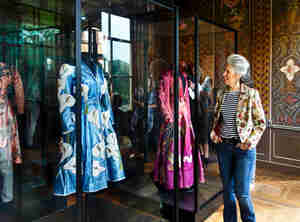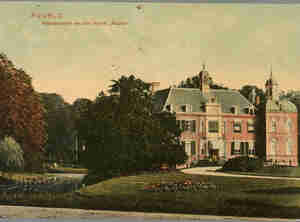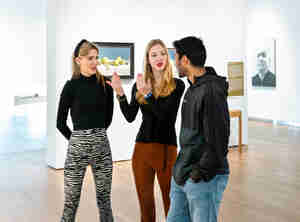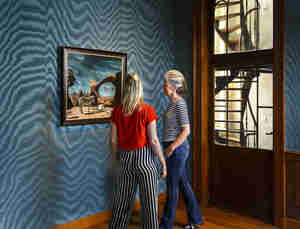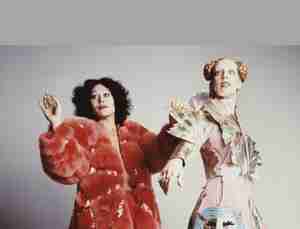Stately, enigmatic, elegant, and viewing the world from a distance, Carel Willink (1900-1983) is the cool grandmaster of neorealism. From his thirties, his reputation grew as an unparallelled painter of monumental, architectural settings and ominous skies. Museum MORE owns the largest Willink collection. In Ruurlo Castle we show around 30 of his masterpieces.
Exhibition
The display at Kasteel Ruurlo showcases the evolution of a searching artist who later developed into a painter of a technically perfect, elegant, and enigmatic oeuvre. The collection at the castle rotates, but there are always masterpieces by the artist on view.
Film
In addition to Carel Willink’s art, you can now watch the remarkable documentary Fantastisch Realist by Paul Huf, made in 1975 about Willink, at Kasteel Ruurlo. This 30-minute film introduces the viewer to the painter and his work process in his Amsterdam studio. The language is Dutch.
Music
Want to get in the mood? Willink loved classical music from a young age. He admired everything by Rachmaninoff, whom he had seen perform. In his studio, he enjoyed listening to classical music on the radio and to the piano playing of his second wife, Wilma. Our music selection has been curated with the help of his widow, Sylvia Willink. Listen to our special playlist on Spotify.


The Young Artist
From a young age, Carel Willink was introduced to painting. His father, a car dealer (unusual at the time) and amateur painter, encouraged his son’s love for art. After struggling to find his way while studying architecture and medicine, Willink left to become a painter. His parents initially did not support this decision, as an artist’s life could mean poverty.
When he traveled to Germany around 1920, he encountered the avant-garde in Berlin, where he studied at the International Free Academy. As a searching artist, he tried everything—Expressionism, Dadaism, and more. Later, Willink remarked, “I experimented with just about every ‘ism.’ After every two, three, or four paintings, I would change direction.”
Deserted Streets
Through much experimentation, including lessons in Paris, Carel Willink developed his own style. Inspired by the Italian painter Giorgio de Chirico, Willink created deserted streets, squares, and parks that became his unique ‘trademark.’ But he wanted more: to excel in precision and technical perfection. He displayed immense ambition and patience, studying Old Masters from the 16th and 17th centuries he admired, like Holbein and Vermeer. Rembrandt appealed to him less, as he felt his work “smelled too much of sweat and blood.”


Seer?
Female nudity in his work is never erotic but always aesthetic, perhaps even intellectual. Although he believed that ‘intellect’ didn’t help with painting, saying, “When you paint, your mind is in the tip of your brush.” Yet, Willink also had humor and was once described as an ‘amused pessimist.’ It almost seems as if he had a gift for predicting historical events. Did he, with his apocalyptic paintings from the ‘fearful 1930s,’ foresee the outbreak of World War II? The ominous atmosphere in his works certainly suggests so. After the war, he was often retrospectively regarded as a kind of seer.
Madly in Love
In the 1950s and afterward, Willink continued to paint consistently in his style. The public continued to admire him, with captains of industry and society figures requesting him as their portrait artist. He painted portraits of beer magnate Freddy Heineken and Queen Juliana, among others. His other paintings included exotic animals like zebras, llamas, and anteaters, and the famous camel in the park of Versailles.
The artist brought modern times into his own universe, including nuclear power plants and atomic explosions, which he combined with ruined temples and statues. The decline of our civilization seemed ever-present in Willink’s world. But the essence of his art had no political or social message: “The core of my work is a deadly love for reality.”
*Willink’s Portrait of Mathilde (1975) is temporarily on loan and not currently on display at Kasteel Ruurlo. Soon, this painting will be exhibited at the Amsterdam Museum-H’ART Museum.

